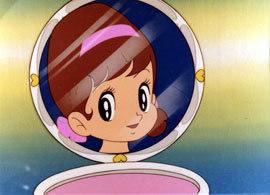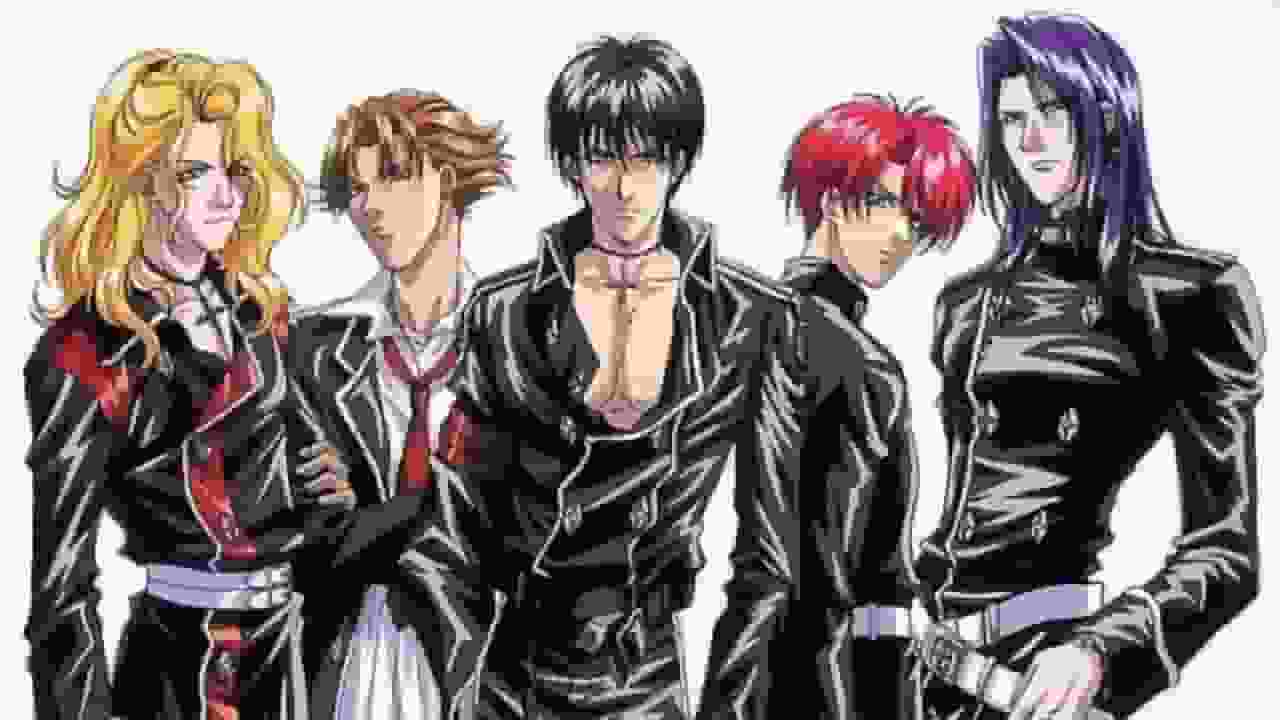The appeal and evaluation of the first season of "Himitsu no Akko-chan"

The appeal of the first season of "Himitsu no Akko-chan" and its historical backgroundHimitsu no Akko-chan is a Japanese animated television series that aired from 1969 to 1970 and is based on the manga of the same name by Fujio Akatsuka. The series follows the adventures and growth of Akko, a young girl who can transform into various forms using a magical compact, and was extremely popular among children at the time. This article will take a closer look at the appeal of the series and its historical background. Story and CharactersAkko (Atsuko Kagami) receives a magic compact from the Queen of the Mirror Kingdom by making a grave for her precious broken hand mirror. Using this compact, she can transform into anything by chanting the spell "Tekumakuma-ya-kon." Using this power, Akko solves various cases and spends her days happily with her best friends Moko (Motoko Naniwa) and Taisho (Daisaku Akatsuka). Akko is a girly and demure girl, a little shy and a crybaby, but she uses her magic compact to act bravely. Moko is a big eater, spirited and sisterly girl who understands Akko well. Taisho is a bully who bullies girls, but he is kind-hearted and dotes on his younger brother, Shosho. Shosho is still a baby with a pacifier in his mouth, but he always rides on his cat, Dora. Other characters with unique personalities, such as Mr. Sato, Mr. Moriyama, Kankichi, Chikako and Ganmo, make an appearance to liven up the story. Background and influences"Himitsu no Akko-chan" is one of the magical girl anime series produced by Toei Animation (now Toei Animation), following "Sally the Witch." The original is a manga by Akatsuka Fujio that was serialized in "Ribon" magazine from 1962, and various adjustments were made when it was made into an anime. This work was popular with many children as it fulfilled the desire to transform and identify with adults, which arises from their admiration for glamorous jobs, as seen in children's role-playing. In particular, the large number of children who played Akko-chan using their mothers' compacts while imitating Akko's spell, "Tekumakuma ya kon...", could be said to have become a social phenomenon at the time. Broadcast information and episodes"Himitsu no Akko-chan" was broadcast on NET TV (now TV Asahi) from January 6, 1969 to October 26, 1970. It consisted of 94 episodes, each 30 minutes long, entertaining children every week. The episodes were diverse, such as "Lulu in the Mysterious Mirror" in which Akko uses her magic compact for the first time, and "Let's Go Kenta-kun" in which Akko transforms into Kenta and tries soccer. "The Circus Has Come" also features Akko transforming into a member of a circus troupe, and "What Happened to the Man's Promise?" in which Akko's friendship with the general is put to the test. These episodes reflected the daily lives and dreams of children, and resonated with viewers. Cast and crewMany popular voice actors of the time appeared in the series, including Oota Yoshiko as Akko, Shirakawa Sumiko as Moko, and Otake Hiroshi as Taisho. In addition, many talented staff members participated in the series, including Yukimuro Shunichi and Ando Toyohiro as scriptwriters, Ikeda Hiroshi and Tanaka Ryozo as directors, and Takahashi Shinya and Hane Shoetsu as animation directors. Kobayashi Asei was in charge of the music, and the theme song "Himitsu no Akko-chan" and the ending theme "Suki Suki Song" were written by Inoue Hisashi and Yamamoto Morihisa, composed by Kobayashi Asei, and performed by Okada Kyoko and Mizumori Ado, and left a deep impression on viewers. Related Works and Their InfluenceHimitsu no Akko-chan was not only made into a TV series, but also into a movie version. The first movie was released on March 18, 1969, July 20, 1969, March 17, 1970, July 19, 1970, and March 17, 1973, respectively, and was a blow-up of the episodes from the TV series. The second movie was released on March 18, 1989 and July 15, 1989, and added new storylines and characters. In addition, the second TV series (from October 9, 1988 to December 24, 1989) and the third series (from April 5, 1998 to February 28, 1999) were also produced, and the series continued to be loved by children of every generation. Appeal and evaluation of the workThe appeal of "Himitsu no Akko-chan" lies above all in Akko's transformations and her adventures. Akko's transformation into various forms using her magic compact and her ability to overcome obstacles gave children hope and dreams. Additionally, episodes depicting universal themes such as friendship, familial love, courage and justice deeply moved viewers. Furthermore, the story and character settings, which reflected the social background of the time, resonated with viewers and raised the acclaim of the show. This work was a pioneer of magical girl anime and had a major influence on subsequent anime works. In particular, it established the transforming heroine genre, which led to many works following suit. In addition, the fusion of Fujio Akatsuka's unique humor and Toei Animation's technical capabilities made it a visually appealing work. Recommendations and how to watch"Himitsu no Akko-chan" is a work that can be enjoyed by both children and adults, and is highly recommended for those who like transforming heroines and witch anime in particular. It is also recommended for those who are interested in the social background of the time and the history of anime production. It is available on DVD and Blu-ray, as well as on streaming services. Please experience Akko's adventures and growth through this work. summaryHimitsu no Akko-chan is a Japanese anime television series that aired from 1969 to 1970 and is based on the manga of the same name by Fujio Akatsuka. The series, which depicts the adventures and growth of Akko, a girl who can transform into various forms using a magic compact, was extremely popular among children at the time. We have provided detailed information about the story and characters, production background, broadcast information, episodes, cast and staff, related works, the appeal and reviews of the series, recommendations and viewing methods. Please experience Akko's adventures and growth through this series. |
<<: Marine Boy: A thorough review of the story of deep sea adventure and growth
>>: Wonder-kun's first dream of space travel: A thorough evaluation of his dream adventure
Recommend
The filing information of the animated version of "Stealing the Stars in September" is released. It is divided into three parts, upper, middle and lower, with a total of 16 episodes
Recently, a new round of radio and television sho...
"Stranger Things" leads Netflix's list of top ten original movies and series
Recently, the streaming platform Netflix announce...
Original animation "Wonder Egg First" pre-broadcast PV released, official broadcast on January 12
The completely original TV animation "Wonder...
Netflix's "Black Clover: Sword of the Magic Emperor" new poster will be released exclusively on March 31
The new theatrical animated film of the famous an...
Comedy film "Bubble Crew" Chinese subtitle trailer released on Netflix on April 1
Today (March 5), Netflix's new film "The...
JK Rowling slams LGBT people: They are hypocritical and love to attack others
At the recent British LGBT Awards, actor David Te...
Creator of Ultraman's ultimate move Specium Ray dies at 88
Although the special effects of the early "U...
A thorough review of the first OVA of "Tenchi Muyo! Ryo-Ohki"! A detailed explanation of its merits and shortcomings
The appeal and evaluation of the first OVA of &qu...
DC Comics Censored, Sexy Scenes Harmonized, Fans Disappointed by Female Curves
Last year (2018), DC Comics partnered with Walmar...
Modern Mistranslations: The Appeal and Problems of Anime from a New Perspective
"Modern Mistranslation": A New Era Ente...
The real last Heisei Kamen! The new Kamen Rider special effects movie "Kamen Rider Brun" is launched
Although there have been several Kamen Rider spec...
Netflix's novel adaptation series "One Hundred Years of Solitude" is expected to be released this year
Today (April 18), the trailer for Netflix's m...
Review of The Tale of the Tiamoon Empire: The princess's comeback from the guillotine is a must-see!
The Tale of the Tiamoon Empire ~The Princess'...
The TV animation of "The Fruit of Evolution" is confirmed to start in October and the latest trailer is released
The official TV animation of "The Fruits of ...
Pixar's new animated series 'Win or Lose' removes transgender storyline
According to an exclusive report from The Hollywo...









